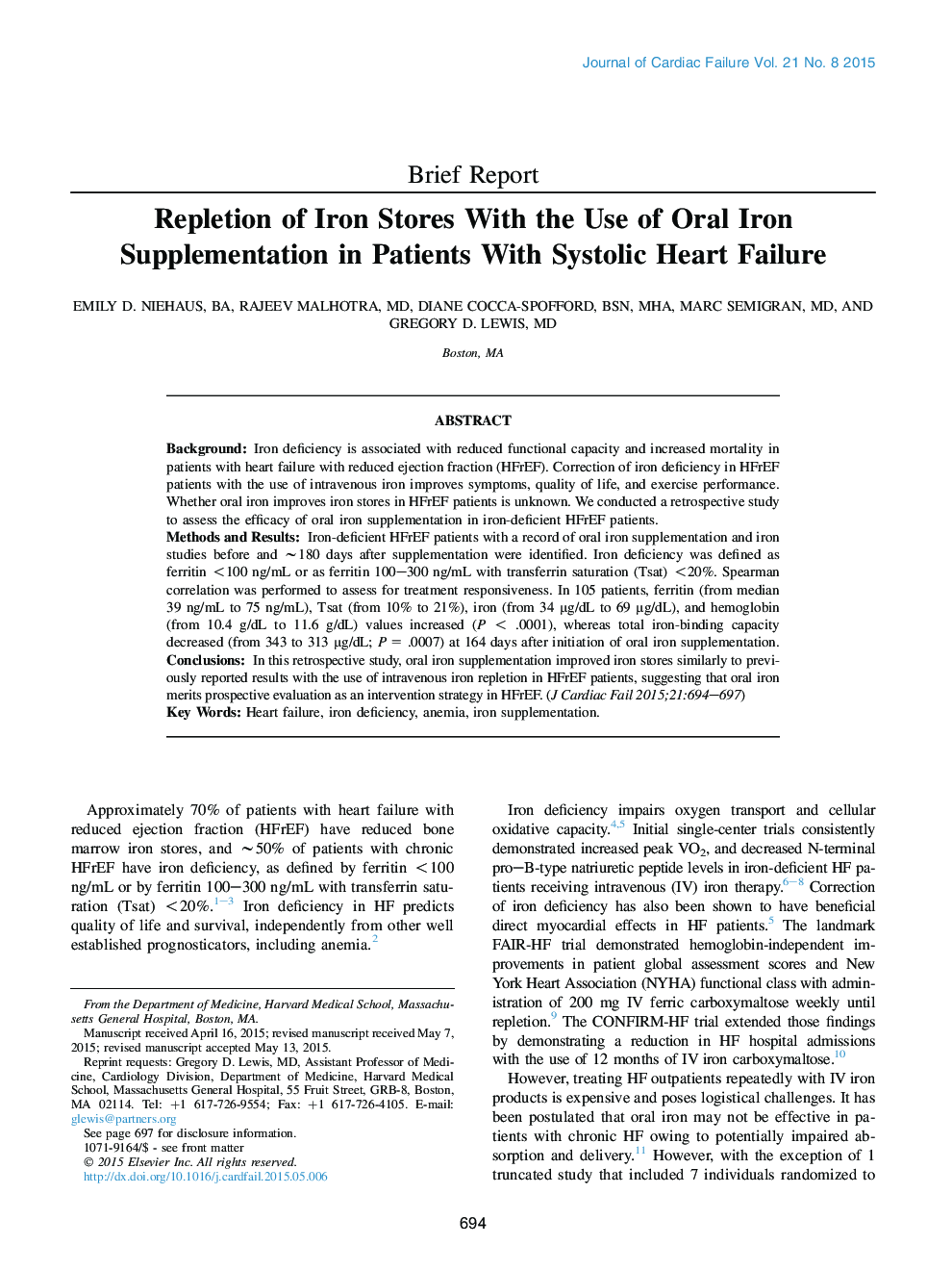| Article ID | Journal | Published Year | Pages | File Type |
|---|---|---|---|---|
| 2958882 | Journal of Cardiac Failure | 2015 | 4 Pages |
•Oral iron supplementation improved markers of iron status over a median of 164 days.•No association between oral iron dosage and degree of improvement in iron markers.•Increase in Tsat with oral iron was similar to IV iron in FAIR-HF trial.•Oral iron therapy warrants prospective evaluation in iron-deficient HFrEF patients.
BackgroundIron deficiency is associated with reduced functional capacity and increased mortality in patients with heart failure with reduced ejection fraction (HFrEF). Correction of iron deficiency in HFrEF patients with the use of intravenous iron improves symptoms, quality of life, and exercise performance. Whether oral iron improves iron stores in HFrEF patients is unknown. We conducted a retrospective study to assess the efficacy of oral iron supplementation in iron-deficient HFrEF patients.Methods and ResultsIron-deficient HFrEF patients with a record of oral iron supplementation and iron studies before and ∼180 days after supplementation were identified. Iron deficiency was defined as ferritin <100 ng/mL or as ferritin 100–300 ng/mL with transferrin saturation (Tsat) <20%. Spearman correlation was performed to assess for treatment responsiveness. In 105 patients, ferritin (from median 39 ng/mL to 75 ng/mL), Tsat (from 10% to 21%), iron (from 34 μg/dL to 69 μg/dL), and hemoglobin (from 10.4 g/dL to 11.6 g/dL) values increased (P < .0001), whereas total iron-binding capacity decreased (from 343 to 313 μg/dL; P = .0007) at 164 days after initiation of oral iron supplementation.ConclusionsIn this retrospective study, oral iron supplementation improved iron stores similarly to previously reported results with the use of intravenous iron repletion in HFrEF patients, suggesting that oral iron merits prospective evaluation as an intervention strategy in HFrEF.
